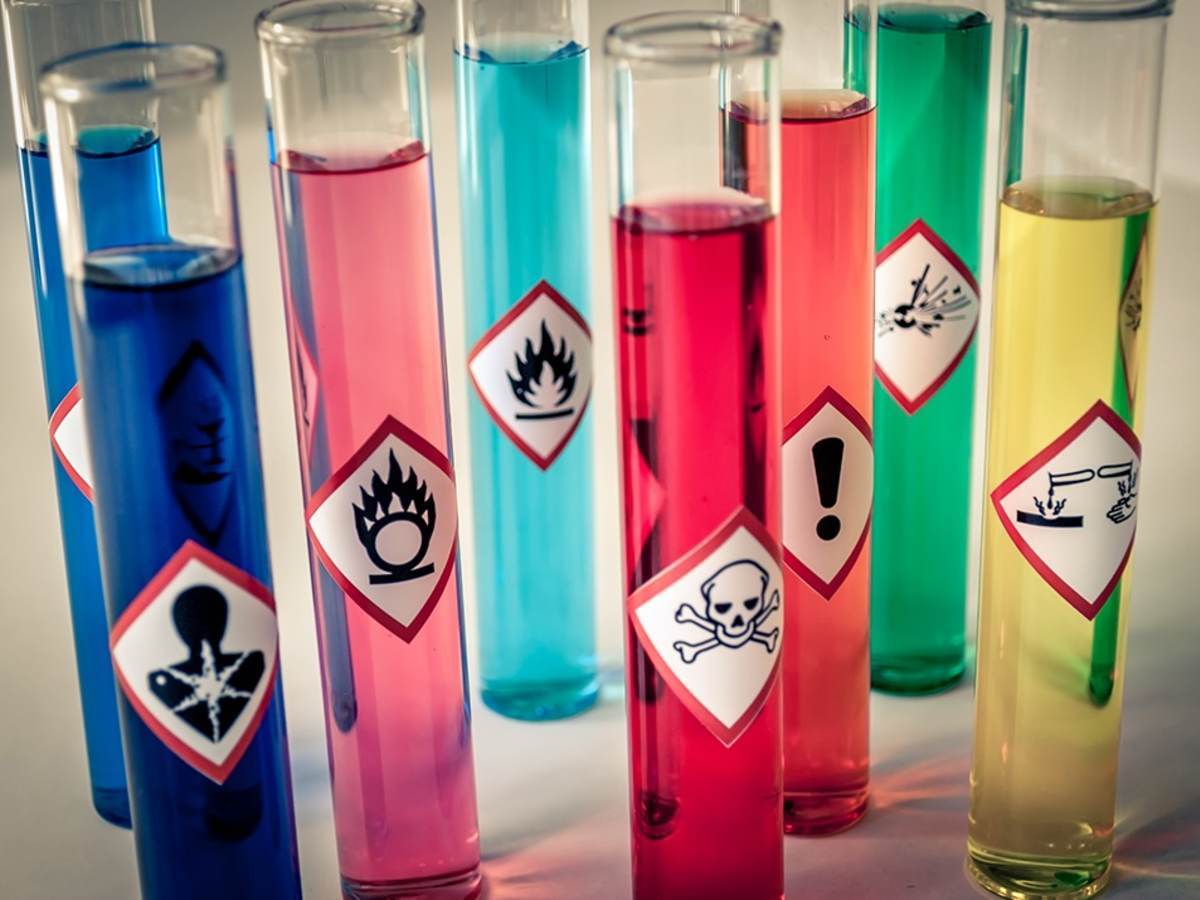April 11, 2023
By Dr. Eleanor Grimes, Senior Regulatory Specialist and Dr. Martina Schneider, Regulatory Affairs Group Leader
The introduction of new hazard classes to the EU Classification Labelling and Packaging Regulation (CLP) was originally proposed in the Chemical Sustainability Strategy published by the EU commission in October 2020.
A new Commission Delegated Regulation published on March 31, 2023 finally introduces the hazard classes for endocrine disruptors, persistent, bioaccumulative and toxic/very persistent and very bioaccumulative (PBT/vPvB) and persistent, mobile and toxic/very persistent and very mobile (PMT/vPvM) substances including the label elements, appropriate EUH phrases and the classification limits for mixtures.
This implementation is unusual as changes of this magnitude have previously been required to go through the standard legislative procedure, before being published as a Commission Regulation. Instead, to speed up the process a less rigorous process was applied, resulting in the changes being published as a delegated act.
Endocrine disruptors
Endocrine disruptors have been separated into two separate classifications, one regarding the effect on human health, with the other regarding the effect on the environment. These are then sub-divided into two categories.
- Category 1 being for known or presumed endocrine disruptors. These require reliable test data to prove that the substance meets the following criteria:
- Endocrine activity
- An adverse effect in an intact organism or its offspring or future generations
- A biologically plausible link between the endocrine activity and the adverse effect
- Category 2 is for suspected endocrine disruptors. These require evidence of the above 3 points, but not necessarily from the tests meeting the criteria for a category 1.
When substances are present in a mixture the following generic limits for classification apply for both the human and environmental endocrine disruptors:
|
Component classified as: |
Generic concentration limits triggering classification of a mixture as: |
|
|
Category 1 |
Category 2 |
|
|
Category 1 |
≥ 0.1% |
|
|
Category 2 |
≥1%* |
*If a category 2 endocrine disruptor is present in the mixture at ≥0.1% a SDS shall be made available upon request.
Once a product has been classified in one of the new endocrine disruptor categories the following label elements will apply:
Endocrine Disruptor for Human Health
|
Classification |
Category 1 |
Category 2 |
|
Symbol/Pictogram |
N/A |
N/A |
|
Signal Word |
Danger |
Warning |
|
Hazard Statement |
EUH380: May cause endocrine disruption in humans |
EUH381: Suspected of causing endocrine disruption in humans |
|
Precautionary Statement Prevention |
P201 P202 P263 P280 |
P201 P202 P263 P280 |
|
Precautionary Statement Response |
P308 + P313 |
P308 + P313 |
|
Precautionary Statement Storage |
P405 |
P405 |
|
Precautionary Statement Disposal |
P501 |
P501 |
Endocrine Disruptor for the Environment
|
Classification |
Category 1 |
Category 2 |
|
Symbol/Pictogram |
N/A |
N/A |
|
Signal Word |
Danger |
Warning |
|
Hazard Statement |
EUH430: May cause endocrine disruption in the environment |
EUH431: Suspected of causing endocrine disruption in the environment |
|
Precautionary Statement Prevention |
P201 P202 P273 |
P201 P202 P273 |
|
Precautionary Statement Response |
P391 |
P391 |
|
Precautionary Statement Storage |
P405 |
P405 |
|
Precautionary Statement Disposal |
P501 |
P501 |
PBT/vPvB
A substance meets the criteria for a PBT when it fulfils the criteria below for persistence, bioaccumulation and toxicity:
Persistence
- the degradation half-life in marine water is higher than 60 days
- the degradation half-life in fresh or estuarine water is higher than 40 days
- the degradation half-life in marine sediment is higher than 180 days
- the degradation half-life in fresh or estuarine water sediment is higher than 120 days
- the degradation half-life in soil is higher than 120 days
Bioaccumulation
- A substance shall be considered to fulfil the bioaccumulation criterion (B) where the bioconcentration factor in aquatic species is higher than 2 000
Toxicity
- the long-term no-observed effect concentration (NOEC) or ECx (e.g. EC10) for marine or freshwater organisms is less than 0,01 mg/L
- the substance meets the criteria for classification as carcinogenic (category 1A or 1B), germ cell mutagenic (category 1A or 1B), or toxic for reproduction (category 1A, 1B, or 2) according to Sections 3.5, 3.6 or 3.7
- there is other evidence of chronic toxicity, as identified by the substance meeting the criteria for classification: specific target organ toxicity after repeated exposure (STOT RE category 1 or 2) according to Section 3.9
- the substance meets the criteria for classification as endocrine disruptor (category 1) for humans or the environment according to Sections 3.11 or 4.2
A substance meets the criteria for a vPvB when it fulfils the criteria below for very persistent and very bioaccumulative
Persistence
- the degradation half-life in marine, fresh or estuarine water is higher than 60 days
- the degradation half-life in marine, fresh or estuarine water sediment is higher than 180 days
- the degradation half-life in soil is higher than 180 days
Bioaccumulation
- A substance shall be considered to fulfil the “very bioaccumulative” criterion (vB) where the bioconcentration factor in aquatic species is higher than 5 000
When substances are present in a mixture the following generic limits for classification apply for PBT and vPvB products:
|
Component classified as: |
Generic concentration limits triggering classification of a mixture as: |
|
|
PBT |
vPvB |
|
|
PBT |
≥ 0.1% |
|
|
vPvB |
≥0.1% |
Once a product has been classified in one of the new PBT/vPvB categories the following label elements will apply:
|
Classification |
PBT |
vPvB |
|
Symbol/Pictogram |
N/A |
N/A |
|
Signal Word |
Danger |
Danger |
|
Hazard Statement |
EUH440: Accumulates in the environment and living organisms including in humans |
EUH441: Strongly accumulates in the environment and living organisms including in humans |
|
Precautionary Statement Prevention |
P201 P202 P273 |
P201 P202 P273 |
|
Precautionary Statement Response |
P391 |
P391 |
|
Precautionary Statement Disposal |
P501 |
P501 |
PMT/vPvM
A substance meets the criteria for a PMT when it fulfils the criteria below for persistence, mobility and toxicity:
Persistence
- the degradation half-life in marine water is higher than 60 days
- the degradation half-life in fresh or estuarine water is higher than 40 days
- the degradation half-life in marine sediment is higher than 180 days
- the degradation half-life in fresh or estuarine water sediment is higher than 120 days
- the degradation half-life in soil is higher than 120 days
Mobility
- A substance shall be considered to fulfil the mobility criterion (M) when the log Koc is less than 3. For an ionisable substance, the mobility criterion shall be considered fulfilled when the lowest log Koc value for pH between 4 and 9 is less than 3.
Toxicity
- the long-term no-observed effect concentration (NOEC) or ECx (e.g. EC10) for marine or freshwater organisms is less than 0,01 mg/L
- the substance meets the criteria for classification as carcinogenic (category 1A or 1B), germ cell mutagenic (category 1A or 1B), or toxic for reproduction (category 1A, 1B, or 2) according to Sections 3.5, 3.6 or 3.7
- there is other evidence of chronic toxicity, as identified by the substance meeting the criteria for classification: specific target organ toxicity after repeated exposure (STOT RE category 1 or 2) according to Section 3.9
- the substance meets the criteria for classification as endocrine disruptor (category 1) for humans or the environment according to Sections 3.11 or 4.2
A substance meets the criteria for a vPvM when it fulfils the criteria below for very persistent and very mobile
Persistence
- the degradation half-life in marine, fresh or estuarine water is higher than 60 days
- the degradation half-life in marine, fresh or estuarine water sediment is higher than 180 days
- the degradation half-life in soil is higher than 180 days
Mobility
- A substance shall be considered to fulfil the “very mobile” criterion (vM) when the log Koc is less than 2. For an ionisable substance, the mobility criterion shall be considered fulfilled when the lowest log Koc value for pH between 4 and 9 is less than 2
When substances are present in a mixture the following generic limits for classification apply for PBT and vPvB products:
|
Component classified as: |
Generic concentration limits triggering classification of a mixture as: |
|
|
PMT |
vPvM |
|
|
PMT |
≥ 0.1% |
|
|
vPvM |
≥0.1% |
Once a product has been classified in one of the new PMT/vPvM categories the following label elements will apply:
|
Classification |
PMT |
vPvM |
|
Symbol/Pictogram |
N/A |
N/A |
|
Signal Word |
Danger |
Danger |
|
Hazard Statement |
EUH450: Can cause long-lasting and diffuse contamination of water resources |
EUH451: Can cause very long-lasting and diffuse contamination of water resources |
|
Precautionary Statement Prevention |
P201 P202 P273 |
P201 P202 P273 |
|
Precautionary Statement Response |
P391 |
P391 |
|
Precautionary Statement Disposal |
P501 |
P501 |
The following application dates for the classification and labelling requirements are outlined in the regulation:
|
Date of application for all new hazard classifications |
|
|
Substances placed on the market prior to May 1 2025 |
November 1, 2026 |
|
Substances placed on the market after May 1 2025 |
May 1, 2025 |
|
Mixture placed on the market prior to May 1 2026 |
May 1, 2028 |
|
Mixtures placed on the market after May 1 2026 |
May 1, 2026 |
It is expected to have several other changes following Commission Delegated Regulation (EU) 2023/707, e.g., amendments to the REACH, Biocide Product and Plant Protection Product regulation. It is planned that all new hazard classes are prioritized for harmonized classification (Amendment of CLP article 36 expected).
This new methodology used by the EU to bring about significant legislative changes in a more expediated manner has now created a precedence that is likely to be repeated for other EU chemical legislations, such as REACH (EC 1907/2006). Therefore, industry will need to be proactively monitoring the various consultation periods if they want their voices to be considered in future changes.
These new categories have not been adopted into GHS, but they have been brought up for consideration in the 2023-2024 biennium by the EU, with the hope that a reverse of the usual process will take place. The sub-committee will need to reach a consensus for the new classification to enter the GHS. Once it has, the local legislation will also need to be updated to become applicable in other jurisdictions. All of this will result in the EU deviating significantly from the rest of the world for the foreseeable future.
Resources
Commission Delegated Regulation (EU) 2023/707: https://eur-lex.europa.eu/legal-content/EN/TXT/?uri=CELEX%3A32023R0707
German helpdesk information event on the new hazard classes under CLP: https://www.reach-clp-biozid-helpdesk.de/SharedDocs/Termine/DE/2023-03-16_Neue_Gefahrenklassen.html
Working documents for the 43rd session of Sub-Committee of Experts on the Globally Harmonized System of Classification and Labelling of Chemicals: https://unece.org/info/Transport/events/368936
Regulatory Roundup Newsletter
Never miss an update
UL, the global safety science leader, can keep you updated on the latest events with a variety of materials, ranging from the latest regulatory news, webinars, white papers, events, industry insights and more.
Subscribe to our monthly Regulatory Roundup Newsletter and stay up to date on current and upcoming regulations and all the latest chemical industry news.
Safety Data Sheet (SDS) Authoring and Labeling Services
Create, maintain and distribute comprehensive SDSs and labels to meet your increasingly complex global compliance requirements.
Chemical Regulatory Compliance
Manage your chemical compliance needs with the help of global regulatory expertise and leading resources.
Chemical Compliance Training
We provide a series of chemical regulatory training programs designed to help understand the diverse set of requirements and how to confront them.
Get connected with our sales team
Thanks for your interest in our products and services. Let's collect some information so we can connect you with the right person.





